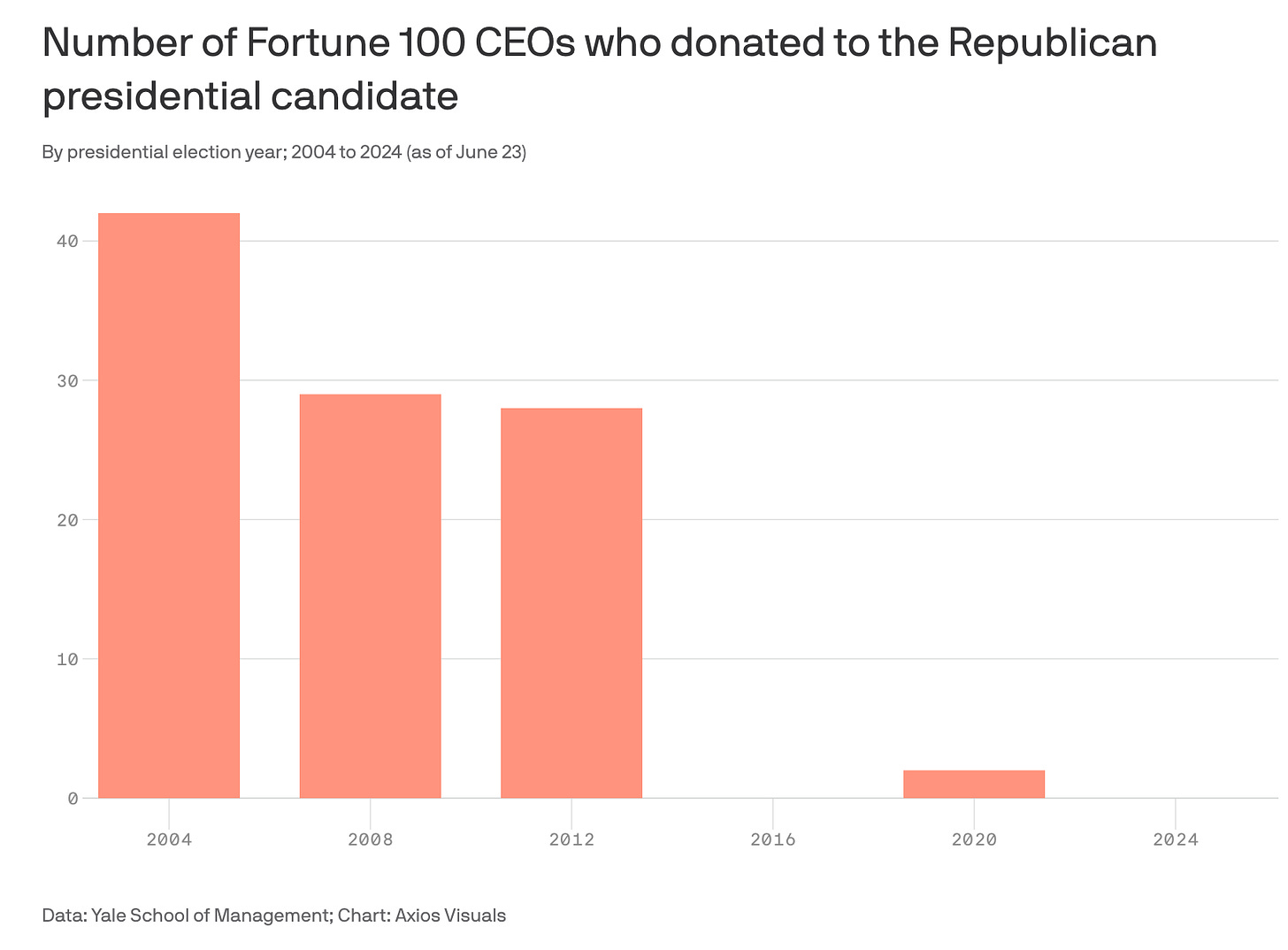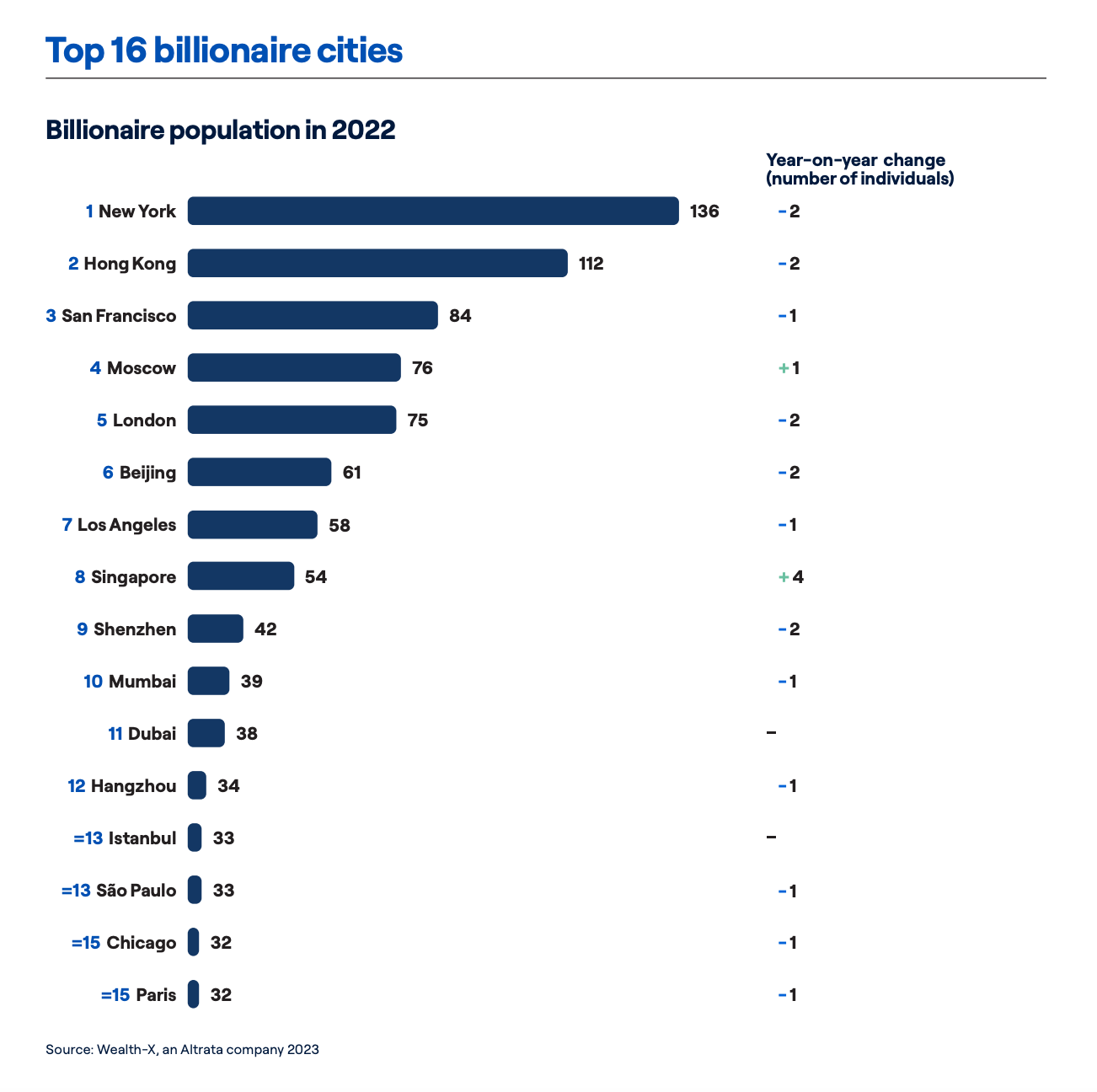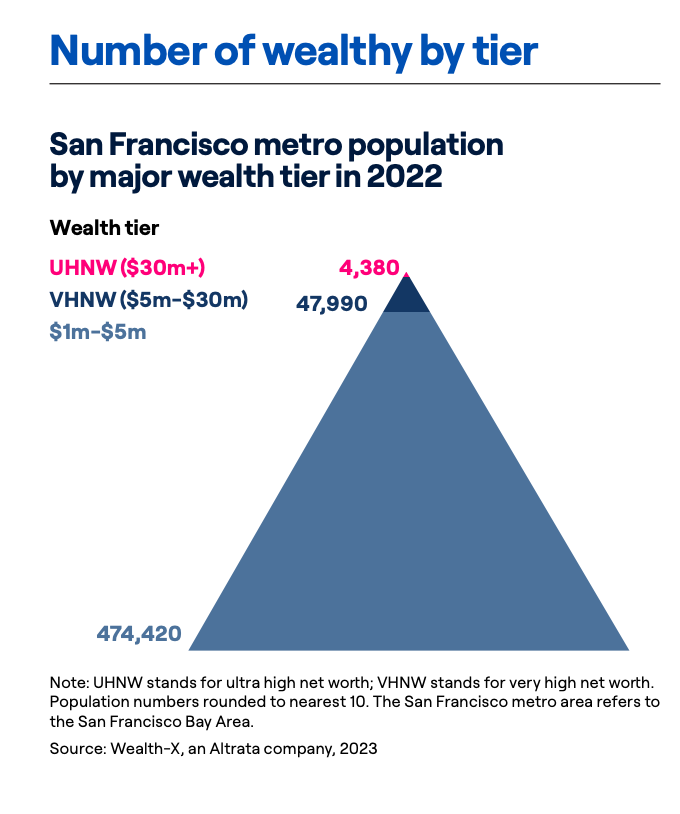What is going on in the Republican party and its agenda for economic policy and business? How can J.D. Vance be mouthing stuff about being for workers v. elites, whilst cozying up to venture capital in Silicon Valley? Whose interests are served by protectionism and migration control? What about Vance’s skeptical remarks about the dollar as a reserve currency?
These were questions that Cam and I took on on Ones and Tooze last week.
Is the posturing of figures like J.D. Vance, now chosen as Trump’s VP, merely cynical? Is he merely currying favor with whoever he needs to support him at any given moment? Does this reflect Vance’s complex biography, attested to in his bestseller Hillbilly Elegy and his mother’s appearance - “almost 10 years sober” - at the Republican National Convention?
All of those factors are no doubt in play. But, in large part, our confusion attest to the fact that we need to think less schematically and in a more specific and empirically rich ways about the connections between business interests, wealth and political mobilization.
We need to distinguish scales of business, personal fortunes, sectors, regions, cultures, degrees, types and directions of globalization and the tactics that may be in play in constructing a powerful political bloc. Such an approach dissolves stark contradictions and inconsistencies into a complicated logic of coalition building.
First of all and most importantly, all the big money backing for Trump and Vance so far comes from what you might call the “personalistic” side of US capitalism.
As of late June 2024, zero CEOs of Forbes top 100 corporations had donated to Trump. As analyzed in a previous Chartbook, Trump’s ultra rich donors consist of idiosyncratic billionaire money. Even after “the” debate and the assassination that continues to be the case.
h/t Felix Salmon
Musk’s announcement of his support for Trump, means that Trump now has at least one CEO backer.
The distance is rooted in the norms of corporate governance and large-scale management in the US today. Trump’s unpredictable, anti-woke style does not fit with the manners of the corporate elite. And then there is the small matter of his felony conviction.
Vance’s elite support base is above all drawn from Silicon Valley venture capital types. It is also entrepreneurial, individualistic, billionaire-level-rich, but (with the exception of Elon Musk) not yet mega cap.
In general (again with the exception of Musk) the business people in question do not employ large workforces. They employ investment analysts and CFO and CIOs and coders and teams of software engineers, but their model of accumulation is not based on a complex political economy of extracting surplus value from large workforces. That does not mean that the businesses that they invest in don’t have workers. But the relationship of the venture capitalist to that labour force is indirect. What they are looking to do is to bet on a series of unicorns.
From that point of view, there’s no contradiction in Vance expressing support for an anti-trust radical like Lina Khan at the Federal Trade Commission in her attack on the incumbent monopolistic platform firms, the likes of Amazon or Meta or Google. This is doubly the case if you are a conservative who also accuses those platforms of denying you free speech and censoring conservative content.
Billionaire or not, you can fashion yourself a narrative of insurgent resistance fighting for a hearing or a place in the market against the lock grip of the old-new elite.
Matt Stoller who himself belongs to the new guard of muck-raking (in the best possible sense) anti-corporate activists in the US, puts it as follows in his excellent substack Big,:
At first, Vance bought into standard libertarian ideas, consistent with Thiel’s thinking. Thiel was a co-founder of PayPal with Elon Musk, and the alums from PayPal, the so-called “PayPal mafia,” are hugely influential in Silicon Valley today, though they are not entirely aligned with big tech. Thiel, for instance, hates Google, and this group is one of Vance’s core influences. While a venture capitalist, in the mid-2010s, Vance began to rethink his priors, ultimately transitioning into a populist with aggressive stances on economics, immigration, and foreign policy. While there’s a temptation to see this change as purely opportunistic, Vance has taken political risks inconsistent with mere careerism. Indeed, four months ago, Vance told a crowd that “Lina Khan is one of the few people in the Biden administration that is doing a pretty good job.” In the GOP, those are fighting words. What’s most strikingly different about Vance is something simple. Age. He’s young. Both he and Khan are in their 30s, and both grew up seeing the disastrous set of policies of the 2000s and 2010s, not the prosperity of the 1990s. Neither has a sanguine view of big tech, a view which is largely held by those who came of age in the 1990s and still at some level understand Google as a disruptive upstart and Mark Zuckerberg as a kid. To Vance and Khan, Google and Facebook are just the establishment. Indeed, when Vance praised Khan, it was at an event called “Remedy Fest” put on by a tech incubator called YCombinator, and oriented around the question of how to break up Google if the corporation was found to be acting unlawfully. To have a prominent 39 year-old Republican Senator show up at a conference whose sole focus is thinking through what a post-Google dominant internet would look like is a big political statement about what the younger faction of the right might look like.
Stoller and I disagree about many things, but his substack is often outstanding.
So, one line of difference around which the Vance wing rallies is big-old and new-little(er) tech.
This has to do with general issues of anti-trust and competition. It also, more specifically, has to do with crypto, blockchain etc. Crypto is a unifying factor across much of the coalition that is behind Trump and Vance.
To get a full dose of this, check out the extended conversation between Marc Andreessen and Ben Horowitz of the Silicon Valley venture capital firm a16z.
Of the two Andreessen is the more vocal public commentator. Last year Andreessen’s techno optimist manifesto was widely discussed. To get a flavor consult just the first few lines:
“Lies
We are being lied to.
We are told that technology takes our jobs, reduces our wages, increases inequality, threatens our health, ruins the environment, degrades our society, corrupts our children, impairs our humanity, threatens our future, and is ever on the verge of ruining everything.
We are told to be angry, bitter, and resentful about technology.
We are told to be pessimistic.
The myth of Prometheus – in various updated forms like Frankenstein, Oppenheimer, and Terminator – haunts our nightmares.
We are told to denounce our birthright – our intelligence, our control over nature, our ability to build a better world.
We are told to be miserable about the future.
Truth
Our civilization was built on technology.
Our civilization is built on technology.
Technology is the glory of human ambition and achievement, the spearhead of progress, and the realization of our potential.
For hundreds of years, we properly glorified this – until recently.
I am here to bring the good news.
We can advance to a far superior way of living, and of being.
We have the tools, the systems, the ideas.
We have the will.
It is time, once again, to raise the technology flag.
It is time to be Techno-Optimists.”
At Cam’s instigation, we discussed the manifesto on Ones and Tooze last year.
Marc Andreessen and Ben Horowitz have come out in favor of the Trump-Vance team because they
see them as less likely to impose onerous regulation on crypto-blockchain adjacent ventures
see them as more aligned with their techno-nationalist vision of American strength
and also because they hate the Biden administration’s last gasp effort to tax the rich i.e. the proposal to tax unrealized capital gains, which are at the very heart of the venture capital, Silicon Valley wealth machine.
As Stoller points out, Marc Andreessen and Ben Horowitz are in their basic alignment actually not so much Trump-Vance Republicans as Clinton-era New Democrats. They would like a Democratic party focused on innovation and tech-led national economic growth. Their calculation is tactical. Backing Trump now will inflict a stinging defeat on the left-wing of the Democratic party, who they credit with controlling the Biden administration. This will in the long-run bend the trajectory of American politics back towards the center ground that they see as fundamentally at the core of American identity and America’s special destiny.
So there are a cluster of interests gathering around the Trump-Vance ticket for a mixed bag of motives.
They don’t represent all of tech, but rather the individualist, anti-big tech, maverick faction within that ramified system.
They certainly don’t represent corporate America as a whole.
They don’t represent “billionaires” across the country or even overall wealth in California.
According to the data of Altrata there are at least 84 billionaires in San Franscisco alone and thousands of ultra-high net worth individuals. A small fraction will mobilize around either candidate.
But then that is also not what Trump and Vance or Biden and Harris need. For a Presidential campaign you need to aim to raise in the order of $2 billion. To get to that figure you need clusters of big, generous donors and a mass base. Right now Trump and Vance are adding to their roster, whilst that around Biden and Harris is in disarray.
Assuming you win, you then embark on the business of solidifying and modifying those coalitions through policy in action. That is when the platforms of the Republican administration will bite and a new struggle begins.
Renewing the Trump tax cuts and building on them and attempting to slash regulation are relatively consensual.
Large-scale expulsion of migrants is the kind of violent rhetoric that rallies the loyalists and will face a harsh reality test. I discussed this in an earlier Chartbook.
Protectionism will challenge corporate interests in a fundamental way and will need to be squared with America’s most fundamental trade relations which are not with either China or Europe, but with Mexico and Canada.
Finally there is the adventurous talk about the dollar and the reserve status of the American currency which goes to heart of America’s hegemonic position. This will be subject of a future Chartbook.
A variety of factions within the Trump coalition will be contending for influence over these issues. The influence of business leaders and thinking about strategy at that point will work through personnel, through agenda setting, through lobbying, through technical questions of implementation, and preemptive calculations on the part of those in power about what those interests will and will not support.
As Stoller notes, for all the prominence given to trade policy radicals like Navarro and Robert Lighthizer, the Trump campaign so far has a notably more conservative feel.
… Trump is different candidate this time around, he is not attacking big business anymore. In a recent Bloomberg interview, Trump talked about selecting JP Morgan head Jamie Dimon as Treasury Secretary, cutting corporate taxes, keeping TikTok, a “love-fest” with CEOs, and retaining Jay Powell as the head of the Federal Reserve. He is even gingerly discussing distancing himself from Taiwan in the face of Chinese power. And the Republicans in Congress - who are largely still libertarian - will get their say as well.
So what will emerge from a Trump administration is anyone’s guess. Perhaps Vance is a sop to the more radical wing, freeing Trump to follow a more conservative line. It is too soon to tell. At this point the key thing is to have prominent names lined up and hundreds of millions of dollars flowing into the Trump-Vance and Republican campaign coffers. At this point the key thing is initiative and momentum and the Trump-Vance ticket has both on its side.
I love writing Chartbook. I am delighted that it goes out for free to tens of thousands of readers around the world. In an exciting new initiative we have launched a Chinese edition of Chartbook, on which more in a later note. What supports this activity are the generous donations of active subscribers. Click the button below to see the standard subscription rates.
I keep them as low as substack allows, to ensure that backing Chartbook costs no more than a single cup of Starbucks per month. If you can swing it, your support would be much appreciated.







